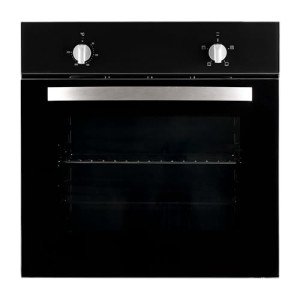Ten Single Built In Ovens That Really Change Your Life
페이지 정보

본문

The Comprehensive Guide to Single Built-In Ovens: Features, Benefits, and FAQs
Introduction
In modern cooking areas, the combination of home appliances is essential to attaining a streamlined design. Among these devices, the built-in oven sticks out as a staple for daily cooking. In particular, single built-in ovens are getting appeal due to their space-saving design and efficiency. This post explores the features, advantages, and commonly asked questions about single built-in ovens, assisting house owners make notified options.
What is a Single Built-In Oven?
A single built-in oven is a cooking appliance developed to be embedded within cabinets, providing a smooth appearance that matches the kitchen's visual. Unlike freestanding ovens, built-in versions offer a range of functions and styles that cater to modern-day culinary requirements.
Key Features of a Single Built-In Oven
Single built-in ovens featured a range of functions that boost performance and user experience. Here are some of the most crucial attributes:
| Feature | Description |
|---|---|
| Size and Capacity | Usually ranges from 24 to 30 inches in width; ideal for numerous kitchen sizes. |
| Cooking Modes | Several settings, consisting of convection, baking, broiling, and often steam cooking. |
| Controls | Digital touch controls or standard knobs with accurate temperature level settings. |
| Self-Cleaning Options | Many models include self-cleaning functions for much easier upkeep. |
| Energy Efficiency | Designed to take in less energy, frequently with an A+ energy score. |
| Safety Features | Consists of kid locks, cooling systems, and temperature level sensing units. |
| Design Options | Offered in different finishes (stainless-steel, black, and so on) and styles (contemporary, timeless). |
Advantages of Using a Single Built-In Oven
The adoption of single built-in ovens uses many benefits:
- Aesthetics: They develop a contemporary and refined appearance in the kitchen, blending perfectly with kitchen cabinetry.
- Space-Saving: Ideal for smaller sized kitchen areas, they are created to enhance space by being built into walls or cabinets.
- Increased Functionality: Many designs come with advanced cooking technology such as wise features that permit remote control through smartphone.
- Easy to Use: With user-friendly controls, built-in ovens are user-friendly and suitable for both amateur and skilled cooks.
- Improved Cooking Performance: Convection designs circulate hot air for even cooking results.
Popular Brands and Models
A number of brand names dominate the single built-in oven market, each offering unique functions to deal with consumer preferences. Here are some notable ones:
| Brand | Popular Models | Secret Features |
|---|---|---|
| Bosch | HBN8451UC, HBL8453UC | European style, convection heat, Wi-Fi connection. |
| Electrolux | E30SO75GPS, E30SO75PPS | Variations in size, advanced grilling abilities. |
| Samsung | NV51K6650SG | Dual convection, smart technology, versatile cooking modes. |
| Whirlpool | WOS51EC0HS | Budget friendly, trusted, self-cleaning features. |
| LG | LWS3063ST | Smart technology, air fry mode, streamlined looks. |
Setup Considerations
Installing a single built-in oven includes particular considerations:
- Measurement: Ensure that the area allotted works with the oven's dimensions.
- Ventilation: Adequate air flow needs to be preserved for security and efficiency.
- Electrical Needs: Check voltage requirements and make sure appropriate electrical outlets are offered.
- Expert Installation: While some property owners may pick DIY, hiring a professional can reduce setup problems.
Regularly Asked Questions (FAQs)
How much area is required for a built-in oven?
- A built-in oven usually requires a designated space that varies by design, normally from 24 to 30 inches in width. Constantly refer to the maker's specifications for precise measurements.
Can I install a built-in oven by myself?
- While some might try a DIY installation, it is frequently suggested to hire a professional to ensure correct fitting, electrical connections, and ventilation.
Are Single Built In Ovens built-in ovens more costly than freestanding models?
- Typically, yes. Single built-in ovens tend to cost more due to their design, installation, and additional features.
What are the differences between convection and regular ovens?
- Stove have a fan that circulates hot air throughout, leading to even cooking. Standard ovens depend on convected heat, which may lead to locations and irregular cooking.
What maintenance is needed for a built-in oven?
- Regular cleaning, ensuring vents stay unblocked, and keeping an eye on functions. Many designs offer self-cleaning choices, which simplify maintenance.
Single built-in ovens represent a merging of design, benefit, and performance in modern kitchens. With a huge selection of features and models readily available, these ovens cater to numerous cooking needs and choices. Whether you are an ambitious chef or a periodic home cook, buying an appropriate single built-in oven can improve your cooking experience while elevating your kitchen's aesthetic. Cautious consideration of functions, installation requirements, and maintenance will result in a rewarding investment in this necessary kitchen appliance.

- 이전글See What Window Maintenance Tricks The Celebs Are Making Use Of 25.07.06
- 다음글9 Things Your Parents Teach You About Guttering Contractors 25.07.06
댓글목록
등록된 댓글이 없습니다.

